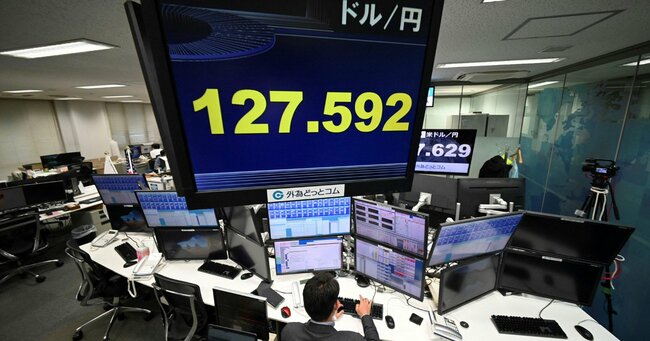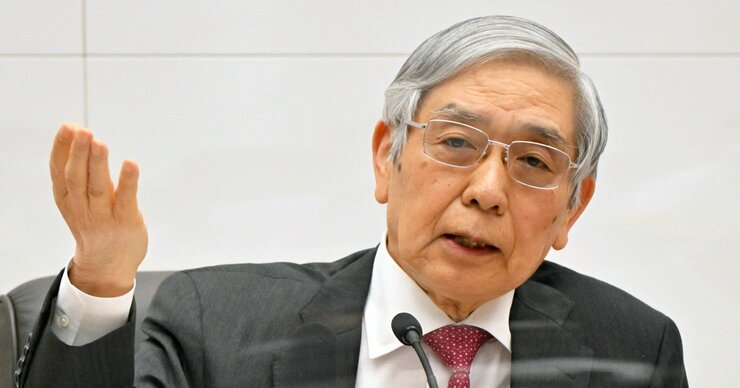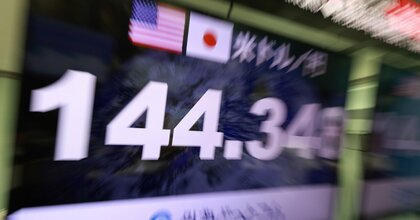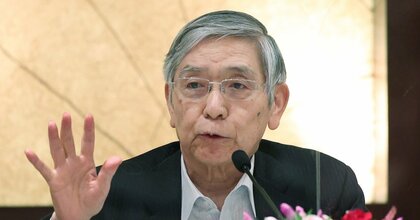Originally published in Japanese on Jan. 26, 2023
Additional adjustments
The yen has rapidly strengthened against the dollar since depreciating to 152 in October 2022. The “Fed pivot” since early November spurred a sharp sell-off of U.S. dollars, the improvement in Japan’s current November account beat market expectations, and inbound tourism is experiencing a solid recovery. These developments have supported the yen.
Additionally, the surprise policy adjustments by the Bank of Japan (BOJ) at the end of last year and the resulting expectations for further policy moves have fueled the yen’s appreciation. At its December 2022 monetary policy meeting, the BOJ unexpectedly widened the 10-year Japanese government bond (JGB) trading band under its yield-curve control framework to about 0.5% to minus 0.5% from about 0.25% to minus 0.25%.
The surprise of the decision amid heightened domestic inflation invited speculation of further policy adjustments, forcing the BOJ to increase its JGB purchases to defend the yield-curve control band. Expectations for policy changes included a wider trading band and a shorter target (for example, to 5 year JGB) for ending unconventional monetary easing. Going into the BOJ’s January meeting, the yen appreciated to about 127, the strongest since last June.
Against these heightened expectations, at its January meeting the BOJ maintained its yield-curve control trading band while adjusting its funds-supplying operations to support the yield curve. The yen weakened by 2% to 131.5, reversing most of the prior week’s gains. However, it had returned to its pre-meeting level by the next morning in Tokyo.
Driving yen strength
We expect the yen to strengthen to 125, but the risk to our forecast is skewed toward greater yen appreciation. Our bullish view is based not only on the BOJ’s policy outlook, but also on the expected improvement of Japan’s current account in contrast with the limited appetite among Japanese companies and investors for outward investment.
First, market expectations for further BOJ policy changes should remain through the coming meetings, especially when new leadership takes over at the central bank in April. Key upcoming events include the nomination of a new BOJ governor and deputy governors, likely to come around Feb. 10, and the initial results of the spring wage negotiations that will come out by mid-March. Under the new leadership, we expect the BOJ to make additional adjustments to yield-curve control from April, moving toward scrapping the framework and eventually returning to the traditional policymaking tool of targeting front-end interest rates. This kind of policy normalization and expectations for change should boost the yen, in our view.
Second, Japan’s balance of payments began improving with the November current account, which reached its highest surplus since March 2022 at 1.9 trillion yen ($14.6 billion at current exchange rates). Declines in global commodity prices (which means lower energy import costs) and growing inbound tourism (an increased travel surplus) should support further improvement in the external balance. The end of China’s zero-COVID policy should also boost inbound tourism in Japan — one-third of Japan’s pre-pandemic travel surplus came from Chinese tourism. However, China’s reopening could drive commodity prices up, thereby worsening Japan’s trade balance more than the benefit provided to the travel account.
At the same time, the investment outflows that became prominent under Abenomics from 2013, a key driver of the yen’s depreciation, are starting to reverse in terms of both portfolio and direct investment. Indeed, Japan sold a significant amount of foreign bonds last year while outward merger and acquisition flows were subdued in 2022. Inward investment is now increasing, as exemplified by TSMC’s semiconductor factory in Japan, at an admittedly slow pace.
In sum, Japan’s net foreign-exchange supply and demand from the balance of payments and investment flows is quickly turning in favor of the yen, in contrast to the previous year.
Fed ‘pivot’
The U.S. backdrop is also becoming increasingly supportive of a stronger yen against the dollar. While communications from Fed officials retain a hawkish tone with an emphasis on the need for restrictive policy, peaking U.S. inflation and wages are reinforcing market expectations for a Fed “pivot” and eventual interest rate cuts. Fed Funds futures markets are pricing for two additional 25-basis-point rate hikes in the coming meetings to be fully reversed in the second half of this year.
These expectations come as U.S. core inflation has started to peak out, initially led by good prices, as supply constraints fade and commodity prices decline. Additionally, growth in average hourly earnings continues to slow gradually, with the December reading of 4.6% growth year-on-year marking the smallest annual increase since August 2021.
With U.S. inflation and wage growth expected to slow further, we expect the Fed to reduce its pace of rate hikes to a 25-basis-point increment in its next meeting on Feb. 1, down from a 50-basis-point hike in December and a 75-basis-point one in November. Thereafter, we expect two additional 25-basis-point hikes in March and May, bringing the Federal Funds rate target to its terminal range of 5% to 5.25%. Recent comments from Fed officials reaffirmed their expectations for continued rate hikes to the above-5% range.
As the slowdown in inflation is confirmed closer to the end of this year, we expect the Federal Open Market Committee to initiate a rate “cutting” cycle in its last two meetings of the year (i.e., 25-basis-point cuts in November and December). The outlook for peaking U.S. yields, that is tighter yield differentials between the U.S. and Japan, in our view, should continue to support the yen against the dollar. A global recession this year is also likely to trigger safe-haven bids for the yen.
Shinichiro (Shin) Kadota is the FX Strategist at Barclays in Tokyo. Shin joined Barclays in 2008 and has worked in various teams covering Japanese banks, foreign bond investment for institutional investors, foreign exchange, and yen-rates markets. He graduated from UCLA in 2008 with a degree in International Economics. The views expressed here are his own.











